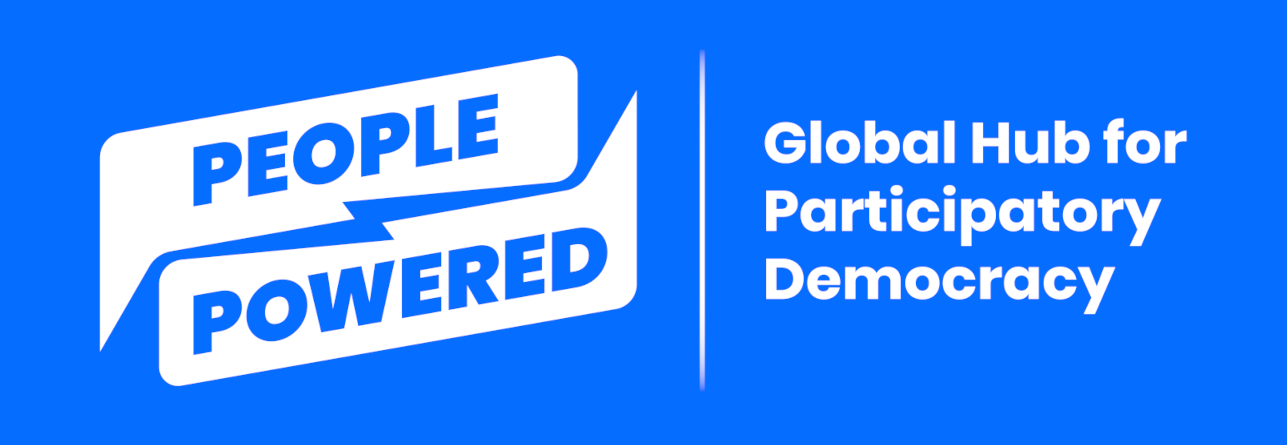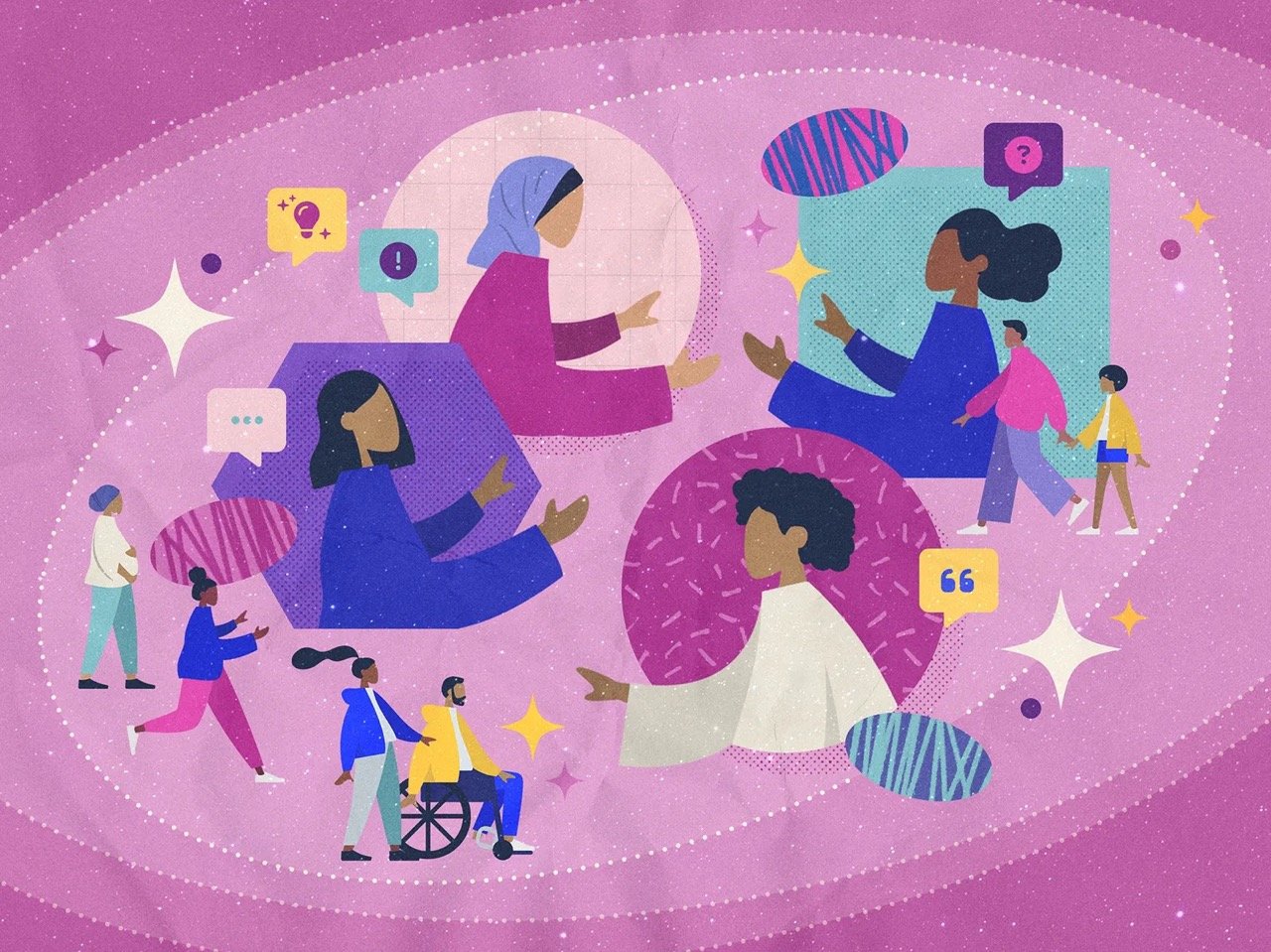How participatory programs can better include women — and why this matters
/On International Women's Day, People Powered shines a spotlight on the transformative power of inclusive democracy through the inspiring journey of a community in Hidalgo, Mexico. This story is not just about celebrating a single achievement; It's about recognizing the ongoing efforts to build a more inclusive and equitable world where every woman's voice can lead to meaningful impact.
By Greta Ríos
Mrs. Oralia Santanna del Ángel, like almost all women in the Mexican village Santa Ana Tzacuala, is gifted in weaving. As a mother of three, she had concerns that local children didn’t have community spaces. She envisioned creating a park where she and other women could engage in weaving while watching their children play, seeing it as a way to curb the issue of youth drug addiction. But in Santa Ana Tzacuala, women were rarely included in village decision-making.
In 2022, that began to change, and women's voices counted like never before. People Powered member Ollin helped launch a new program to build a more inclusive democracy in Santa Ana. In the video and story below, we share how they used participatory budgeting (PB) to engage women in decision-making, and how this delivered big benefits for the community.
About Santa Ana Tzacuala
Santa Ana Tzacuala is a small community in the state of Hidalgo, in the central part of Mexico. It has around 5,000 inhabitants, mainly dedicated to commercializing flowers. The population is 100% indigenous.
In Mexico, indigenous people's experiences are set apart from others. Often, they are subject to higher rates of discrimination and a lack of access to equal opportunities and essential services. At the same time, indigenous communities have the right to govern themselves differently through various formal and informal means.
The community of Santa Ana has a body of representatives called the “Delegation.” This structure comprises four individuals elected to serve a one-year unpaid term to solve disputes and represent and make decisions on behalf of the community. It is considered an honor of the highest kind to be elected a delegate for the community. Until 2022, however, no woman had ever been a delegate.
An aerial view of Santa Ana Tzacuala.
Why Santa Ana?
Ollin received funding to run a participatory democracy project for a community, so it sought to find the ideal location. Out of the many possibilities, Santa Ana stood out for Ollin because of its location, history of scarce participation, lack of political representation of women, and the fact that it was 100% indigenous.
To illustrate this, in 2021, the national government conducted a recall referendum for the president, and only 82 people participated at the polling stations. In the 2022 election for State governor, less than 400 people voted.
Santa Ana was an opportunity to show that participatory budgeting could be a tool to improve living conditions in a community while expanding the people’s trust in democracy and participation.
But Ollin would soon find out that they needed consent from the Delegation to even conduct the project in Santa Ana.
The fog in Santa Ana
It rains almost every day in Santa Ana Tzacuala. The Ollin team members felt shrouded in the cold evening fog when they presented the “Hidalgo Flourishes” project before the Delegation members. “It was like it wanted to engulf us and never let us go,” recalls Karla Luna, who coordinated parts of the project.
Karla recalls the challenge of communicating with the all-male Delegation while trying to sound confident and respectful. The men were very skeptical. Not only were they not used to talking (even less negotiating) with young women (Ollin’s team is all young, all female), but they were also suspicious of things that sounded like they came from the government (Santa Ana has a history of having been let down by the local authorities in previous commitments) or, even worse, from Mexico City (where, according to Santa Ana inhabitants, people tend to think they can dictate solutions to other people’s problems).
Karla Luna from the Ollin team.
That first meeting took at least two and a half hours to present and answer questions from the Delegation. All critical things in Santa Ana require dialogue, and no one is ever in a hurry. It was dark when the Ollin team left the room, awaiting a concrete answer on whether Santa Ana would accept their offer.
It was a good offer: Ollin would work with the community to run a PB pilot, with a budget of $30,000 USD, to execute the three projects with the most votes. The process would involve the community throughout, from designing the PB pilot to supervising the execution of the winning projects.
It took them a couple of weeks to communicate the decision, and even then, it was clear that Ollin could only convince some of the Delegation members to move forward with the project. But at that point, this was a big win for Ollin: they had the green light to start this game-changing experience. Santa Ana had no clue what was coming their way!
The sun in Santa Ana
Efforts to get PB off the ground began almost immediately.
The first step was ensuring the design stage prioritized inclusion. Ollin’s previous experience working with PB in Mexico City had alerted them to the importance of ensuring these processes were well-designed. It’s easy to exclude certain groups, which leads to low participation levels.
To overcome this, Ollin created a working group to decide how the PB process would take place (it agreed on dates, how much time they would have for implementation, who was eligible to propose projects and to vote, etc.).
The working group was composed of two representatives from the local electoral authority (one male, one female), two representatives from Ollin (two females), and three representatives from the community (two males, one female). Each person in the working group had one vote. This effectively meant that the community got one extra vote because Ollin wanted to ensure they owned the whole process and that nothing felt imposed upon them.
A project proposal idea being developed.
This working group set the rules for the “Hidalgo Flourishes” PB pilot: anyone at least ten years old could participate with one vote. Every person could present ideas to the process (individually or collectively). There were no limitations to the number of proposals anyone could contribute.
To encourage children to participate, the Ollin team worked with the local schools to ensure children could learn about the process and actively participate. Additionally, Ollin actively engaged with the women and girls in the community and directly invited them to participate. The fact that the Ollin team was made up entirely of women helped to facilitate this.
Community members registered twenty-seven projects. Five reached the final stage after being assessed for financial and technical feasibility and social impact. Then, the big day arrived.
Voting day: a representative explaining how to use the electronic voting system.
On August 8, 2022, the voting took place in Santa Ana. That day was unforgettable for the Ollin team: they woke up early and worked side by side with the working group members to set up the voting station. They had been doing a lot of work to ensure that the people in the community would participate, but there were no guarantees.
The results: With 160 participants, twice as many people participated in the PB pilot as in the previous national referendum.
What led to this? Ollin did things differently by building trust with the community members. It ensured they understood what the vote was about, what the proposals were, and what would happen once they were selected. Ollin spent a lot of time speaking to the community and explained complex processes in easily understandable ways.
Oralia being awarded as the second most voted project.
The turnout would have been victory enough, but the surprises did not end there. The three chosen projects included a reforestation program that a 12-year-old schoolgirl proposed, improvements to the local soccer court, and recreational stations at a local park. That last project was proposed by a mother who wanted a new place for her kids to play - none other than Oralia.
Tzacualli Park
Oralia’s dream of having a space for women and children to spend time together came true in the form of Tzacualli Park. The park would be an outlet and opportunity for young women and girls to spend their time healthily with their families. The children could play while their mothers weaved.
Mrs. Oralia Santanna del Ángel.
Oralia and her family worked hard to get the necessary votes and played an essential role in the participatory process alongside Ollin.
“The most challenging part is to convince people. I went door to door,” Oralia shared. She recalls the difficulty in getting her community members to come and vote due to the deep distrust in politicians. She eventually managed to draw a crowd of people who gathered to attend the meetings and vote.
To convince other women, she showed them what was possible: a better future for their children through the park. This was an opportunity for women to be role models. Once kids see their moms participate, they also want to follow. Oralia’s son is a prime example, who drew posters calling for participation and hung them up near a flower vendor.
Tzacualli Park being constructed.
Before participating in the “Hidalgo Flourishes” PB pilot, Oralia had shown no interest in discussing her ideas with the authorities because she considered that they would never invest public funds in something like this.
Early on in the process, Ollin brought her to Mexico City to see the different participatory projects that were taking place. Oralia was inspired by the possibilities of participation and decided to bring Tzacualli Park to life. Now, she goes on to inspire other women in her community.
Hidalgo Flourishes!
“Hidalgo Flourishes'' was a life-changing experience for Ollin and Santa Ana Tzacuala. Women proposed two of the three most-voted projects – one from a girl — and a new world of opportunities opened for the women at Santa Ana. The OIlin team reports that women in Santa Ana are more empowered, better informed, and more critical about democratic issues. The girl who proposed the reforestation project was awarded the Youth State Prize in 2023 for her environmental contributions.
The completed playground at Tzacualli Park.
On top of that, Hidalgo made history (or herstory). The first woman ever was elected to be a delegate in 2023!
Ollin built a working relationship with the Delegation members through this project. The Delegates completely changed their attitudes towards the Ollin team. They have reported having gained new trust in institutions (particularly civil society) and democracy (especially in participatory democracy processes) as a way to solve community problems.
The “Hidalgo Flourishes” project shows that participation can be pivotal in empowering women’s voices in democratic processes. We saw that women were more engaged when their ideas were included, and these ideas often focused on the well-being of communities and children. This is a reminder to ask ourselves this question – what transformations are possible if we include women’s voices?
This story was made possible thanks to support from the National Endowment for Democracy.
Key lessons
Benefits of women’s inclusion in participatory programs
New ideas that respond to community needs, especially related to the environment and children.
Women and families are better informed about how government works.
Women are inspired to run for office and vote in elections.
How to make participatory programs more inclusive of women
Be sensitive to existing community customs and cultures surrounding gender. Meet existing leaders where they are at.
Hire women to manage the program and engage the community.
Do outreach in schools, to reach girls and mothers.
Ollin is one of the many People Powered members working on Building Inclusive Democracy globally. Are you ready to join us? People Powered is here to support you with our accelerators, mentorship, and resources. Reach out to us to get started!















